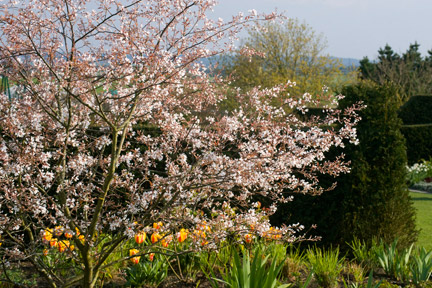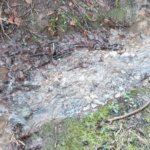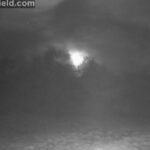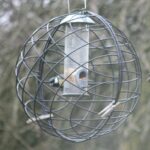Autumn is the traditional and best time to plant new trees. The soil is still relatively warm, the winter rains will ensure the plant doesn’t dry out, and natural dormancy allows roots to grow without stress.
We are encouraged to mark the Queen’s Jubilee next year by planting more trees, and you may be tempted to pepper your garden with new specimens.
But you need to take great care with tree selection. The simple fact is that most gardens are unsuitable for anything except the very smallest of specimens. The problems arise when inappropriate trees are planted in the wrong place.
So here are some basic tips.
1. A tree has roughly the same amount of tissue below ground as above
2. Trees are forest dwellers and expect to grow tall and broad
3. Trees grow for 50 or more years
4. Planting (or removing) trees close to buildings may cause long-term structural damage *
5. Native species are adapted to to grow in harmony with other plants and fauna. Non-native species are always riskier for the surrounding environment.
6. Trees in gardens need regular maintenance. Most trees grow relatively slowly for the first 10 years, then may suddenly take off. Controlling top-growth early in the tree life is much cheaper than having to control mature trees.
7. Tree Conservation Areas exist in most cities, including Bath. It is an offence to cut or remove trees in a conservation area.
8. Trees will remove light from your garden/house, although of course they also provide shade.
So with this in mind, the RHS has published a list of small trees for the garden, that add interest and minimise the potential problems.
Trees to avoid
It is tempting see a tree in a garden centre or nursery in a small state and think that it will fit nicely into your small space. Talk to the nursery, explain your location and area, and they will advise.
But here are some to definitely avoid
Native Silver Birch (Betula Pendula) – grow extremely tall, can cast branches in storms, creates a lot of seed. Even the ‘small’ Betula utilis jacquemontii needs care since it can grow to 7 metres.
Leylandii – much used in hedging but can grow two to 3 feet per year. Anti-social behaviour legislation specifically covers leylandii!
Native woodland trees – oak, ash, hornbeam etc
Non-native forest trees such as Eucalyptus ( much of Northern Spain has been overrun by Eucalyptus, originally planted by a well-meaning monk), any listed plant, Copper Beech, Cedar, Elm, Horse-chestnut, Douglas Fir, Western Hemlock, Larch, Red Oak, Sycamore, Lime and Red Cedar
But if you still want to grow some of these more exotic, (or even the less exotic but potentially large) species, then you can grow most trees in a container, at least for the young part of its life. Container-grown trees have restricted roots and therefore stay compact. Good candidates for this include Olive, Cypress, Citrus (Orange/Lemon/Lime), Pomegranate, Salix and Acers. Even oaks and chestnuts can be containerised.!
You can even bury containers so the size is restricted, but water and nutrients are still available.
Remember though with above-ground containers, you are entirely responsible for watering and feeding.
So, by all means plant a tree for the jubilee, but take your time and plant carefully, after all, the tree will probably outlive you!
* Tree damage to structures is much-debated, and in general well-built structures on stable ground will not be affected. Remember though that tree roots seek out water, so fractured drains and natural water courses will attract roots that may cause blockages or further damage. Tree roots of conifers such as Leylandii, larch and pine can also swell under drives and pathways as the trees mature.













 Total views : 68012
Total views : 68012

Leave a Reply